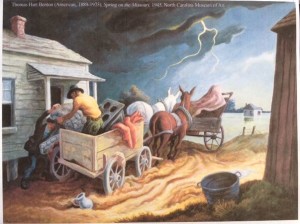Archeological digs on many continents suggest that rhythm bones are the second oldest musical instrument after the human voice. These percussive instruments came to America with Irish and English settlers. In Celtic music, bones are played with only one hand, whereas in the US , the minstrel show tradition established a two-handed technique of performance still used today. 
Most every Sunday afternoon, a former street busker named `Mr. Bones` (above second from the right), joins our weekly Bluegrass jam session benefitting the Children`s Hospital. In the clatter of a busy family restaurant, our songs are usually followed by a wave of silent gratitude from the audience. But, when Mr. Bones arrives, patrons at the brewpub always turn their heads to watch and applaud his energetic and syncopated rhythm tones. After complimenting our waltz tunes with juggling in 3/4 time, he entertains the kids with train whistles, a little soft shoe, and a stick-held dancing limberjack wooden doll. Several times a year, he performs children`s shows with his band “Mr. Bones and the Skeleton Crew” made up of volunteers from the jam band as pictured above at local church fest. For his showmanship, he was inducted into the BRC Hall of Fame three years ago.
Check-out the below link and witness Mr. Bones` kinetic solo on the classic train song “The Texas Eagle”. Too cool or what?








